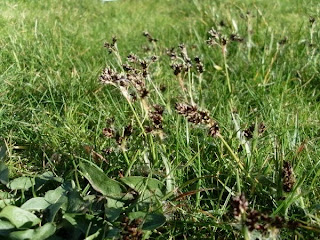

Started up at East Chevington this morning. When I got out of the car 8 Whimbrel were flying around the reserve. On the north pool islands was a Common Sandpiper and some nice summer plumaged Turnstones. At least 5 Grasshopper warblers were singing and 2 Reed and 6 Sedge warblers were singing from the reedbeds. I walked through the dunes which were carpeted with cowslips and Spring Sedge.
I took a picture of a Dandelion noticing the flower was much smaller and the leaves more dissected. According to Swan there are over 240 species of Dandelion in Britain and Northumberland has 109 identified species. The species are divided into 9 sections but Identifying them would need photographs and notes during the flowering and fruiting stages. This particular plant is possibly one of the species from the erythrosperma section but there are 16 very similar species in that section alone.
I don't know what I was thinking about last night but I mentioned Milk vetch instead of Milkwort. Milk vetch does grow in these dunes but it well into May before it flowers.
I walked around to the estuary pools when I came across Common Forget me not. I have seen a mauve coloured flower but never white. On the pool was my first Garganey this year. It flew with a Gadwall onto the south pool. A Wheatear was nearby.
At Druridge pools There was a lot of water about ; the levels near to record levels but plenty of birds here. There were 30 Black tailed Godwits, white and Yellow Wagtail and Wheatear. There was also Common sandpiper here and a good variety of wildfowl. It was raining persistently by now and I had to go back home a little earlier than planned.
















